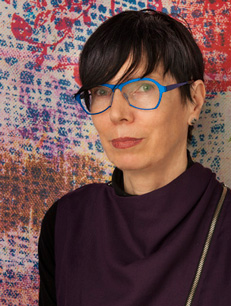 ‘There is nothing new happening in fashion, all we do is recycling’. How many times have we heard this sad statement? However, Robyn Healy, Head of Fashion and Textiles at RMIT University, opens eyes and ears to some interesting changes taking place.
‘There is nothing new happening in fashion, all we do is recycling’. How many times have we heard this sad statement? However, Robyn Healy, Head of Fashion and Textiles at RMIT University, opens eyes and ears to some interesting changes taking place.
Robyn Healy has been interested in Belgian fashion for quite a while now. She even described the Six of Antwerp as ‘revolutionary’. How would you define today’s fashion? Who are the Six of Antwerp? How do both Belgian and Australian fashion industries evolve? Here are some thought-provoking answers to these questions…
How do you think the Six are ‘revolutionary’?
Last year I was part of the ‘Dream The World Awake’ exhibition, presented by Walter Van Beirendonck in Melbourne. The Antwerp Six – Walter Van Beirendonck, Ann Demeulemeester, Dries Van Noten, Dirk Van Saene, Dirk Bikkembergs and Marina Yee – all graduated from Antwerp’s Royal Academy of Fine Arts, the world famous art school that propelled names such as Martin Margiela into fashion folklore.
My aim is not to praise the beauty or creativity of their designs. However, I want to highlight how these young designers have re-imagined traditional fashion and I would like to share some good practices with the audience.
Fashion designers always aspire to be big, but being bigger doesn’t mean you’re better. Is this global arena a need? I think the Six realized that local production also has a great impact. The Six of Antwerp work independently, but they use their collective for publicity so it’s quite a rare phenomenon. They know how to use the media and networks – publications, online presence, performances, etc. – but they keep it to a small scale. They understood that the wider the scale is, the less impact you get.
How would you describe Belgian fashion compared to Australian fashion?
Belgian fashion has a deeper and older heritage than Australia. Belgian designers work with rich materials and high quality handcraft and they combine these techniques with new technologies. Belgian fashion also has a dark side – the grotesque and carnavalesque culture.
On the other hand, Australia doesn’t totally relate to its aboriginal history yet, so it’s creating something new. Of course, designers travel so they know about couture, but it’s not part of our fashion culture. This is why Australian fashion is way more casual and carefree: there’s less formality. The fashion industry goes together with the country’s lifestyle, so Australian fashion has a different sense of market. For instance: bright colours look good on people in Australia because it’s a sunny country. But it wouldn’t suit a northern market.
However, I see a synergy between Melbourne and Antwerp. Both cities have a quite small community; they count a lot of students and networks; and they both developed an independent fashion and art sphere. Architecture and design play a central role in Melbourne and the city also has settled a similar sense of local production.
Do you think fashion has come to a point where there is no innovation anymore?
Innovation is a complex word. People think of innovation in the sense of creative patterns and trends. And indeed, there is not much happening in this area at the moment.
Fashion is old-fashioned!
Let’s look at fashion as an industry… Fashion is old-fashioned! We continue to reinforce old traditions such as seasons for instance. Do seasons really still matter now that everyone travels? You could wear summer dresses all year long if you wanted to. A challenge would be to change fashion’s entire production’s system with only one local collection per year for instance. It could be a sustainable industry. Fashion is also about fabrication, materials, print techniques, and production. And I think that a lot of these aspects are really evolving.
It’s in the fabrication process that innovation is needed. Start to think of fashion in a new way and look at its production and consumption… You will see there’s a lot more happening than you thought.








